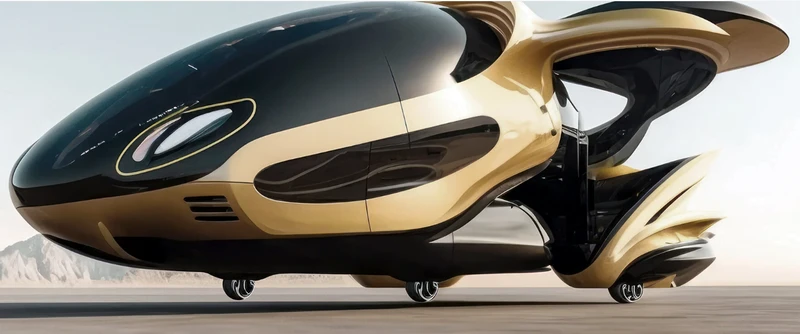Currently, the project Timber Mobilities by Vincent Callebaut and his colleagues seems fantastic. However, tomorrow it could become a reality. After all, most of the bold ideas of the renowned Belgian, who works in Paris, have already been brought to life.
To avoid provoking skeptics, the project authors suggest viewing it as a research initiative. They visualized the near future of transportation using 3D modeling and artificial intelligence tools. Ultimately, they presented five prototypes of individual and collective means of transportation on land, water, and air.
These prototypes are united by ergonomic architecture, aesthetic design, a focus on renewable energy sources, and the mixing of biomaterials (laminated wood, artificial bamboo) with recycled materials (aluminum, fiberglass).
According to eco-architect Vincent Callebaut, the mobility of the future will be more diverse, smarter, and more environmentally friendly. Cities should once again be for people, not for cars. Currently, the transportation sector accounts for the largest share of CO2 emissions worldwide – 24 percent. Each driver spends an average of 90 hours a year in traffic jams. Callebaut is convinced that this situation must come to an end.
The prototypes developed by his studio aim to bring us closer to an eco-friendly tomorrow.
Flying « minibus » Timber eVTOL
This ambitious development is a type of rotorcraft with vertical takeoff, hovering, and landing capabilities. It operates on electric or hydrogen energy.
Most samples of this type of transport accommodate a small number of people and are usually used for private travel or as air taxis. Specialists from the Vincent Callebaut Architectures studio have bypassed these limitations and designed a low-carbon transport vehicle powered by propellers, which will serve between 10 to 20 passengers at a time. It will significantly reduce the time they spend on the road and help alleviate the burden on ground transportation, especially during peak hours, the publication reported. Designboom .
Other potential uses for this prototype could include freight transportation and logistics trips through the city streets.

Shuttles Timber eSHUTTLE
Continuing the research on ecological public transport, the studio has developed the autonomous Timber eSHUTTLE. This computerized shuttle, equipped with sensors, is the result of hybridizing individual cars and public transport. It is comfortable, ergonomic, safe, and equipped with everything necessary to transport a dozen passengers.
According to the creative team, such shuttles without steering wheels and drivers will be made from bio-materials (such as CLT wooden panels). They will operate on solar energy and batteries that charge on dynamic induction pathways. By using dynamic induction charging, Timber eSHUTTLE vehicles will receive energy directly from the road they are traveling on.

Trees ’ I am car and bicycle
The studio Vincent Callebaut Architectures also presented original compact vehicles for private travel.
In their desire to put an end to heavy steel SUVs, the authors have developed wooden, maneuverable, and autonomous urban cars. They operate on electric and solar energy. They will primarily be made from wood or bamboo. Therefore, the automated prototype Timber eCAR could become the most environmentally friendly concept car of the future.
The Callebaut team also showcased a prototype of the revolutionary Timber eBIKE made from laminated wood and graphene. It boasts aerodynamic geometry, a simplified transmission, and wheel designs without axles, hubs, or spokes. This bike is set to become a sensation, especially among those who ride their “two-wheeled horse” to work every day.

Timber Hydrofoil Wooden Vessel
By creating this water transport vehicle, which is more environmentally friendly than an electric bus, the team offered potential passengers calm and fast journeys on the waves. No jolts or bumps.
Self-sufficient vessels obtain the necessary energy from solar panels, wind, and tidal turbines. Moreover, such transport consumes less energy while sailing due to optimized hydrodynamic hulls and wings. The futuristic boats by Vincent Callebaut will be made from biomaterials and/or recycled materials. And when vessels Once they have served their term, they could be completely dismantled and reworked.

